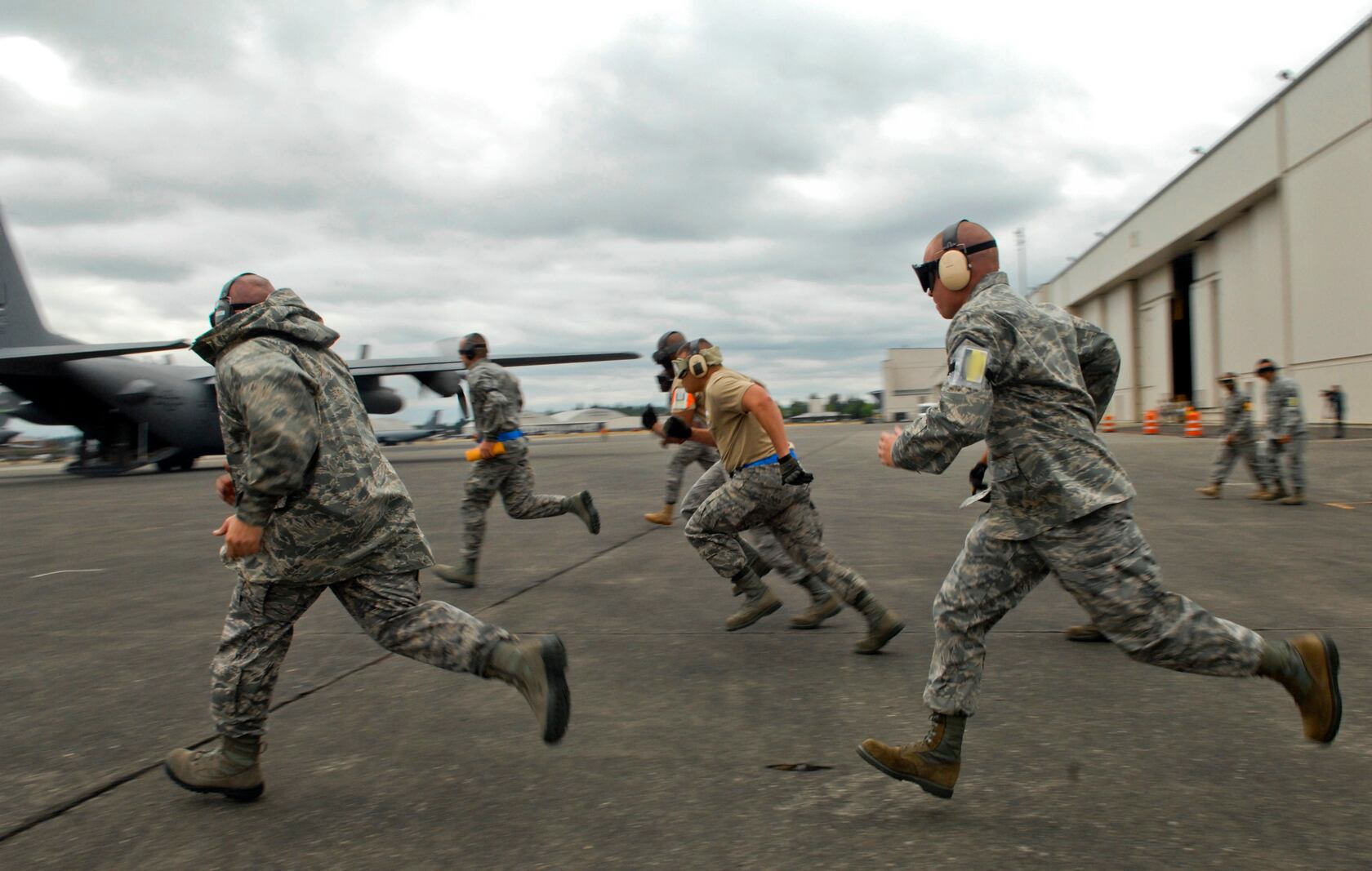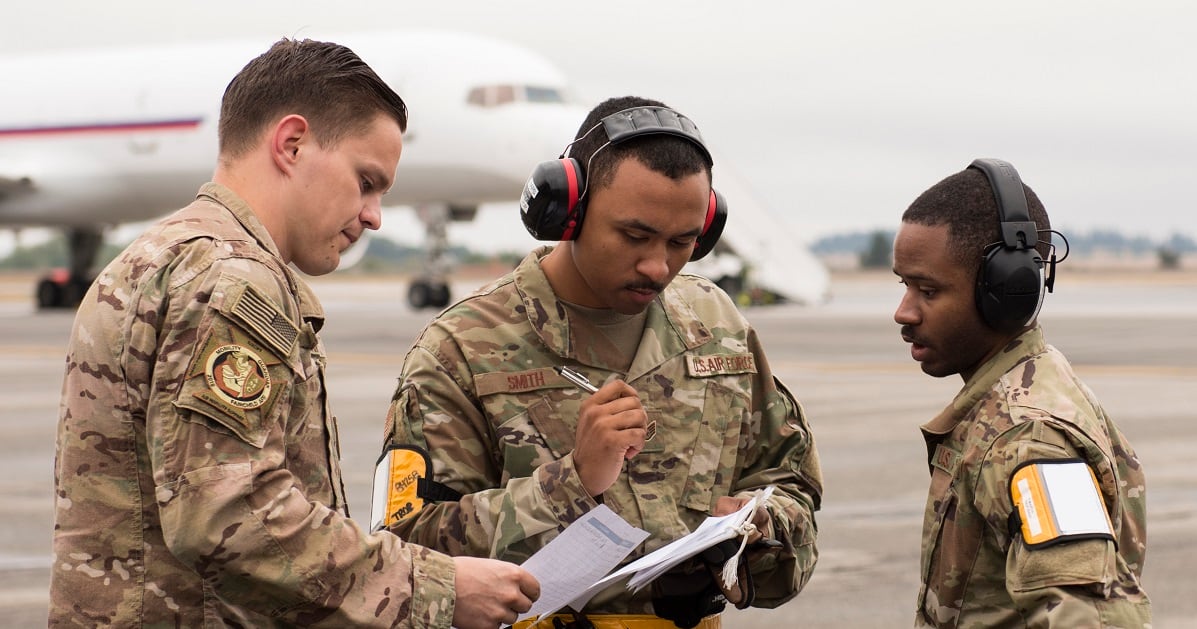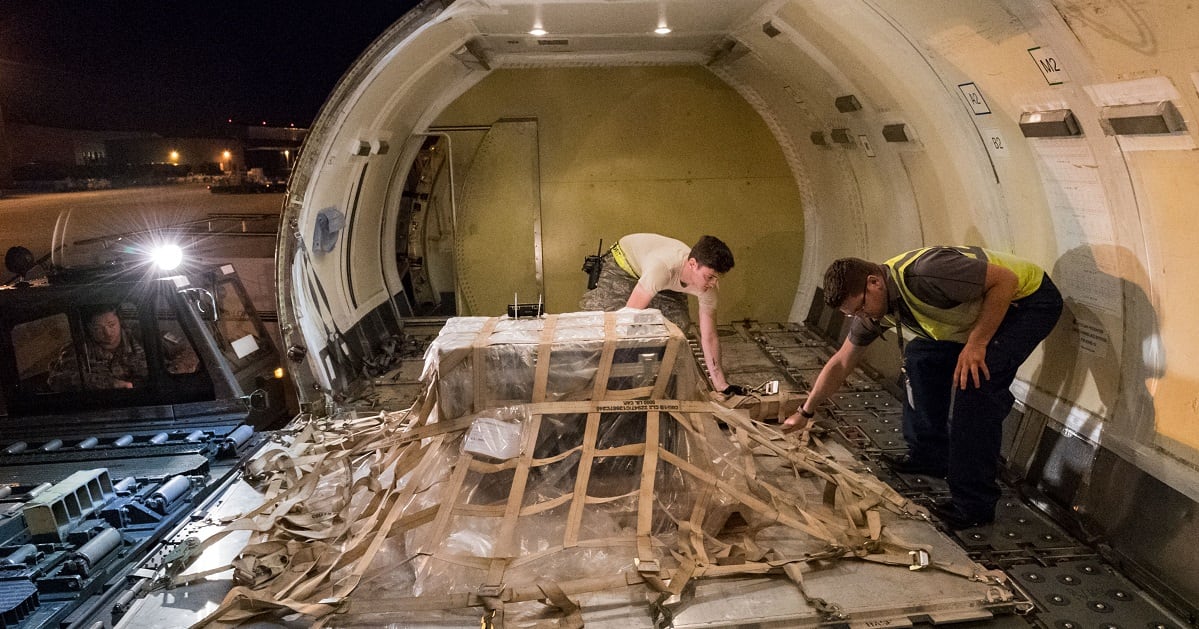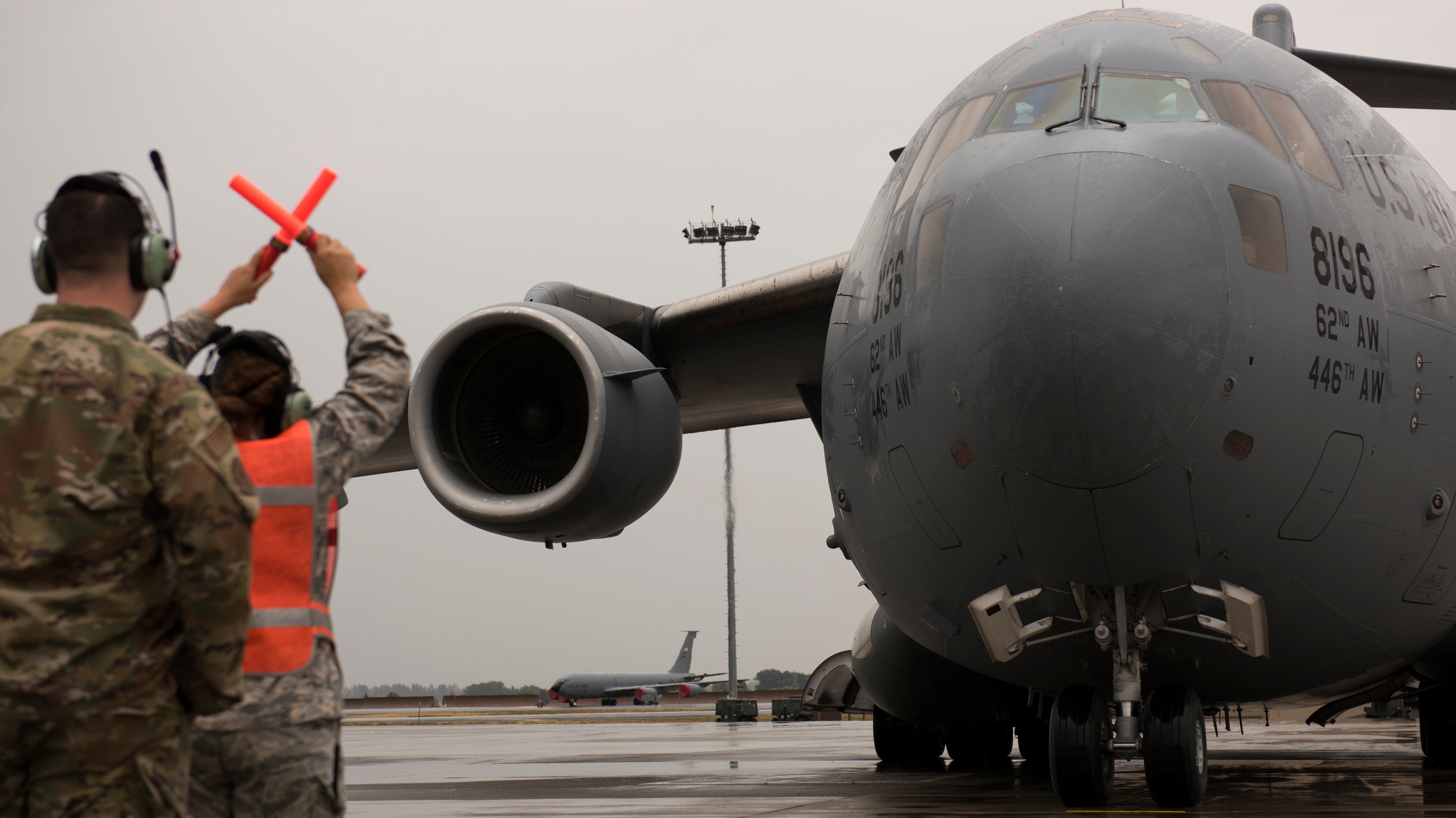Air mobility forces are gearing up for their third massive exercise that will test how smoothly they cooperate — across miles, across the armed forces, and across combat domains.
This May marks the start of the next Mobility Guardian, a biennial event that in 2021 will bring together around 1,500 people for a sweeping response to a pretend humanitarian disaster, said Gen. Jacqueline Van Ovost, Air Mobility Command’s boss, on Wednesday.
“We have five [major commands] and our joint partners with us, and we are doing high-end environment work. They’re dispersed across the northeast portion of the United States at six different fields,” she said at an event hosted by the Air Force Association’s Mitchell Institute for Aerospace Studies.
But the event looks to be much more than a routine airlift training. On top of practicing a humanitarian emergency scenario, AMC wants to test how much it can accomplish in the face of enemy weapons and communications jamming.
Army artillery forces are planning to participate in the event, Van Ovost said, which will also incorporate defensive counter-air operations to protect American assets from attack. A cyber red team will challenge AMC’s movements at every turn, while a military operations center tries to direct forces around their faux contested battlefield.
Air Force Magazine previously reported that the 19th Airlift Wing at Little Rock Air Force Base, Ark., will serve as the exercise’s lead planning wing. It builds on earlier iterations of the premier event that practiced other types of operations, like forcibly entering a remote area under enemy control.
“This is a far cry from what we used to do, which was rodeos in 2017 and earlier, so we’re making really good steps,” Van Ovost said.
RELATED

Air Mobility Command is preparing for a future where assets like tanker jets, cargo planes and aeromedical evacuation platforms are routinely targeted by physical weapons or digital attacks and may be unable to reach other forces or personnel.

Van Ovost noted that measures to counter those attacks could range from low-cost, easily replaceable drones or missiles fired from the wings of mobility aircraft, to electronic warfare technology that can help a plane fly through a hard-to-penetrate area.
The Air Force is also training to be more flexible in situations that require rapid-response forces, and to move resources around the world without relying on brick-and-mortar bases or a sole established logistics chain — a concept known as “agile combat employment.”
“The next fight will not be an iron buildup at Kadena or an iron buildup at Ramstein. The next fight is going to be just in time,” Van Ovost said of responding to a threat on short notice.
Mobility Guardian offers a sandbox to test out future technologies as well, using lessons learned from previous exercises like Nodal Lightning last October. That looked at ways to quickly and efficiently transport people and assets without a huge infrastructure footprint.

“We did learn [from Nodal Lightning] that we can process data forward in a node and dispense it,” Van Ovost said. “We can be a [command-and-control] node and move along orders, and make changes to orders and provide target-quality coordinates to our sister services and to the Air Force. We learned that we can join up our fifth-gen aircraft along with attritables, to be able to speak to each other, and to be able to give orders out to them.”
Attritables can refer to disposable drones or other weapons like a pallet of munitions rolled onto an airplane.
RELATED

Mobility Guardian poses another opportunity to try out new mission communications tech in conjunction with the Air Force’s Advanced Battle Management System. That multibillion-dollar initiative aims to create a more adaptable, artificial intelligence-powered network to direct the service’s aircraft, weapons and computer systems in combat.
One key piece of ABMS looks to turn mobility assets into command-and-control hubs while they hover around the battlespace. Air Mobility Command has used a tanker for C2 in Afghanistan to direct forces when no other means of communication were available. Van Ovost suggested that a C2 pod on a KC-135 tanker could pull double-duty as a data-processing hub or a defensive asset, as well.
“We will have scenarios where we will need to ingress, provide humanitarian assistance, and get out and transmit data forward and crunch data forward for the elements in that formation,” Van Ovost said of Mobility Guardian.
“We’re trying to design what the [future] requirements might be, and expose ourselves to what the services are trying to do, and show them how we can be more effective for them as their maneuver force.”
Rachel Cohen is the editor of Air Force Times. She joined the publication as its senior reporter in March 2021. Her work has appeared in the Washington Post, the Frederick News-Post (Md.), Air and Space Forces Magazine, Inside Defense, Inside Health Policy and elsewhere.





